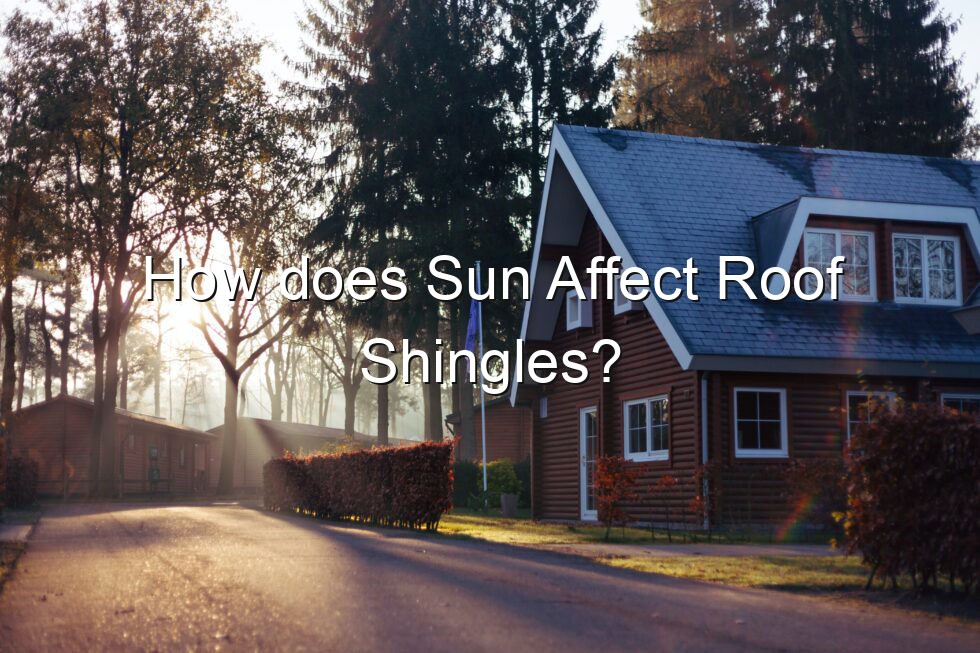Contact us today to ask about our FREE remote Google imaging and/or on-site roofing quotes.
Call us today!
(778) 809-7663
Contact us today to ask about our FREE remote Google imaging and/or on-site roofing quotes.
Call us today!
(778) 809-7663

How does sun affect roof shingles? We see sun faded roofs regularly, aged and damaged residential roofing, slowly wearing down over time.
Well, first what are roof shingles? Roof shingles are a sort of roof covering for sloped roofs that are set in an overlapping way so that each subsequent strip covers the next. They are small pieces of roofing material that are added atop the underlayment, sheathing, and roof trusses to enhance and safeguard your home from the outside elements.
There are quite a few types of roof shingles available, and they are popular amongst people. They include asphalt shingles, wood shingles, felt shingles, metal shingles, slate shingles, clay shingles, concrete shingles, composite shingles, and so on. These materials have various advantages and disadvantages. The type of roof shingle used in a building depends on personal aesthetics and the environment or climate of the area where the shingle is to be used.
A roof is a protective covering that covers or forms the top of a building. The roof is one of the most critical elements of your home, which serves as the first line of defense against unfavorable environmental elements and is one of the first areas that your home's visitors will notice right away. Because of this, however, weather conditions take a significant toll on your home's roof. In a building, the roof has the first direct contact with environmental factors such as rainfall, storms, snow, hail, heavy winds, and sunlight.
Unfortunately, these effects are compounded when a roof has two or more layers of roofing, as opposed to one roofing layer, as it traps water and heat between it's layers; The polar opposite of what shingles were designed to do. Helping the sun to do more damage to the roof in the summer and cause more potential leaks in the winter.
Wind and storms are the most likely causes of roof damage, which are immediate problems. The sun, though, is another factor that can affect a roof that is far more subtle and persistent.
Table of Contents
The heat from the sun results in the expansion of roofing materials, and as they cool, they begin to contract. This cycle can cause slow, long-term damage that intensifies as the years go by. Sunlight contains a variety of radiation, including UV radiation, which may harm the skin and building materials, as you probably recall from science class. A roof can become damaged over time by the sun's UV rays, which weaken the minuscule bonds holding the tiles and shingles together. Most significantly, if there is any trapped air or moisture in your shingles, which is usually a flaw of the manufacturing process, your roof might experience bubbles of hot, expanding air called blisters.
The sun harms roof shingles in several different ways, some of which are listed here:
Sun damage can be resisted to the best of our ability. Since the intense sunlight at high altitudes can hasten the destruction of conventional shingles, some asphalt shingles, for example, are designed to survive ultraviolet radiation for extended periods. Different materials are better than others at withstanding sunlight. For instance, metal roofing is reflective and resistant to warping and cracking. As a result, it is much less susceptible to sun damage than conventional asphalt roofing.
Additionally, solar reflective roofing, commonly referred to as cool roofing, can help stop UV shingle deterioration. These shingles have a coating on the shingle grains that increases their reflectiveness to reflect more of the sun's rays. The shingle is covered with this coating at the manufacturing facility.
Similarly, you might select a long-lasting roofing material that is resistant to sun damage. The good news is that asphalt shingle damage is cumulative or worsens over time.
How to extend the life of roof shingles in this case would be to add new coating to the roof shingles as a part of annual roof maintenance to slow this damage over time. Normally, a spray-on solution that can be lightly coated across the shingles is enough to restore some of the shingle's protection back.
In conclusion, there isn't a roof-safe sunscreen that works perfectly, but there are techniques to prolong the life of your roof. Conducting routine inspections is the most crucial thing you can do to support roof maintenance. A yearly roof inspection can help prevent issues and opting to inspect your roof detects problems before they worsen. Sun damage is a persistent issue that can be successfully avoided by practicing excellent maintenance.